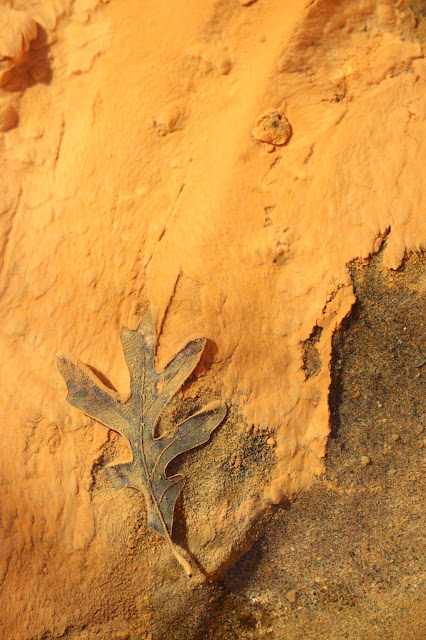Document, Document, Document!
You've probably heard it before: "A fossil collection with no documentation is a pile of paperweights." It's true. And, for some hobbyists, that is just what they like. For others, though, collecting fossils is an attempt to preserved the past before it erodes away or is lost under a shopping center. If you want your collection to be more than decorative, read on!
 |
| Part of my new organizing scheme: pictures of the specimen so that I can match the tag when they get separated! |
The thing is, by the time most of us realize that our collection exceeds our supply of memory cells, the addiction to collecting has led us to unlabeled boxes of stuff tucked in every corner of the house. And, when you clean a few years of dust off of a box and open and open it... what was this stuff again? Where did it come from? Or, maybe you had a need for a certain specimen and you didn't leave a trail of breadcrumbs to find it. Maybe you had a note loose in the box and it fell out at some point. If only you'd made some tags and left yourself some notes!
Or, worse, your CHILDREN open up that box and scratch their heads. They've been helping you move out. You don't want all the clutter anymore; maybe just a few of your prizes to admire on the coffee table. BUT, You've spent years of your life studying this stuff. You don't want to throw it in the trash, especially if the collecting site is no longer open. What can you do with it? I've seen so many adult children on the forums asking for help identifying this or that from their parents' collections and all they have it is a picture they took while cleaning out! They have no idea what they have in hand, where it came from, or when it was collected.
Back in the 1980s, museums got hoards of fossil and mineral donations thanks to a federal tax write-off for such things. Many of those donations now sit in cabinets unopened because they have no documentation. The museums simply have no way to use them, except as give-aways at events, decorations, or craft projects. Research collections need more than a physical piece. They need the data that goes with it.
I personally enjoy taking my treasures to classrooms, libraries, and fossil shows, as well as rotating what I have set out to admire around the house. But, what tags I have, which describe probably half of my collection at this point, have a tendency to get separated from the specimens in the shuffle.
At first it was easy enough to remember that this was from my favorite cliffs, that was from my grandmother's house and the other thing came from my friendly neighborhood spoils pile.
I started keeping detailed field notes complete with drawings and then photos of what I found. As I found more productive colleting spots, it got harder to keep those notes in just a little notebook. Things got backlogged because I didn't want to start a journal entry for the next trip until I had documented everything from the last trip. Eventually, I gave up trying to keep individual pieces straight and just made observations about the most important finds and details about the trip itself - site location, stratigraphy, layout, collecting methodology, how I found out about the place, who I went with, maps, etc. This is all really handy when I need to pull details out, but doesn't help remembering the object in my hand, especially when it could have come from multiple places on multiple trips.
Finally, last year I got frustrated enough with the jumble in my lab that I devised my own catalogue system. Everything has an alphanumeric serial number with an abbreviation for the site, the year the piece was collected, and reference number for a spread sheet and corresponding photos. I can look at a clam shell now and see that this was from my first trip to XYZ. I can look up the name and generate labels for display cases. I can take them to classrooms and tell stories from my field notes. I can donate, and have donated them to the research collection at my local natural history museum. I can continue to build a collection that has more than just sentimental value.
So, what should you keep track of? At minimum, you should keep track of
- Where you got it, where it originated if you purchased it and from whom you acquired it
- When you found it
- Anything you know about the age of the material where it came from
For extra credit,
- Anything you can find out about what it is - it could be years before you figure this out, if your knowledge and resources are limited.
- A list of references you used to figure this out.
- Did you use anything to preserve the piece and if so, what? This is particularly important if someone wants to undo the glue you used down the road!
- Any data you have on the formation it came from
- GPS coordinates/Directions to find the spot where it came from so other people can find the spot when the site becomes a memory.
In the northern hemisphere, many of us are now snuggled indoors, waiting patiently for the spring thaw and the start of collecting season. Why not take a stroll down memory lane. Pick up a box. Revisit your wonderful discoveries. Get organized!
Next up: A review of Trilobase, a personal database for fossil and mineral collectors.



Comments
Post a Comment